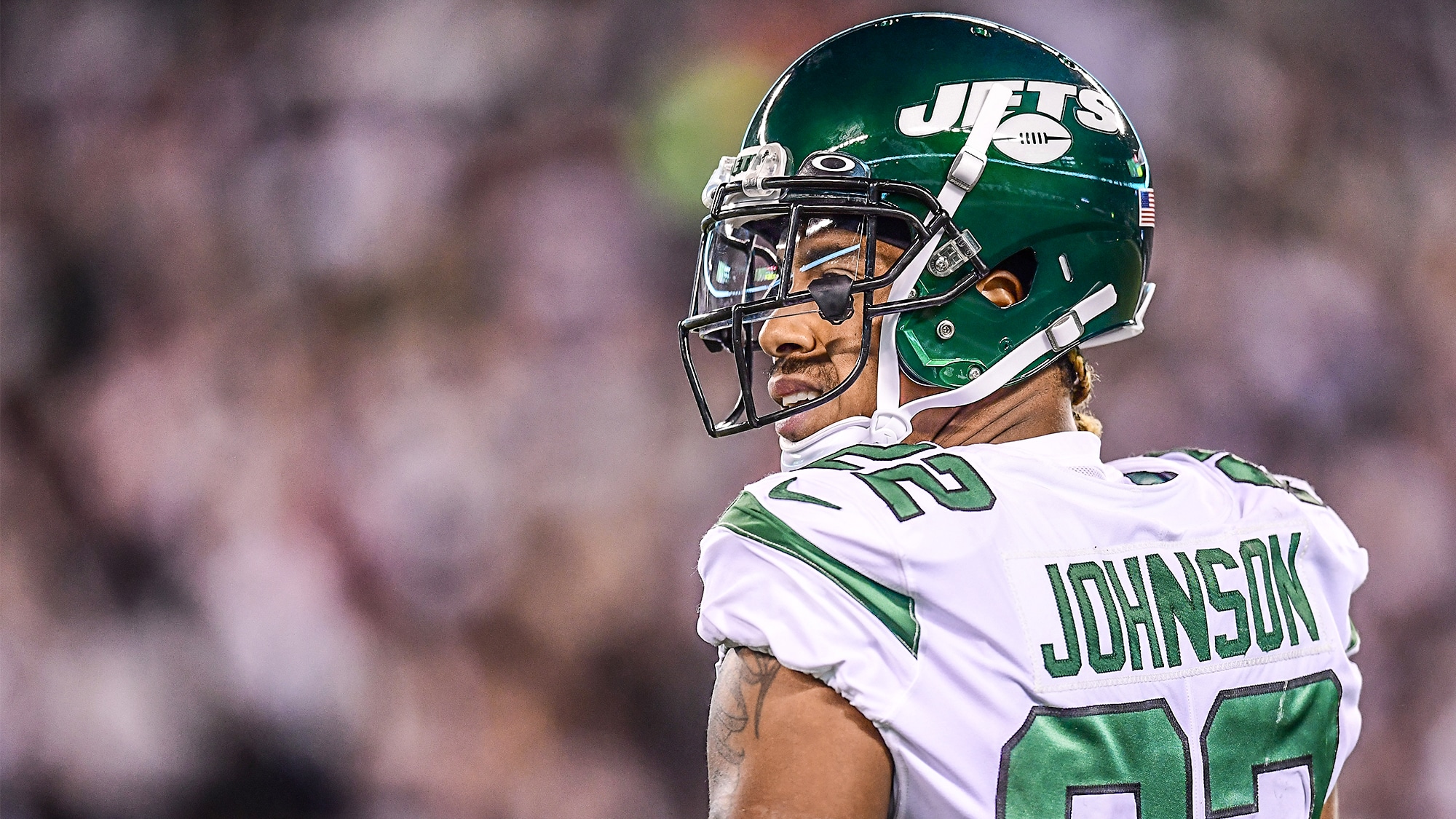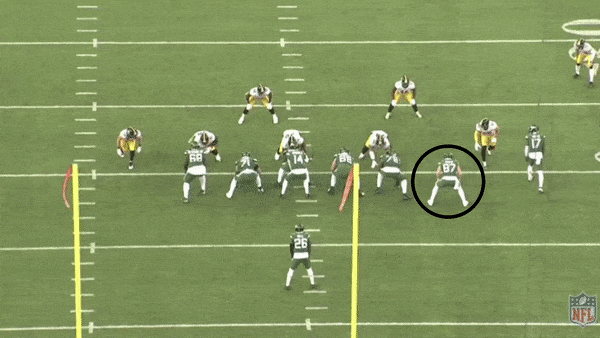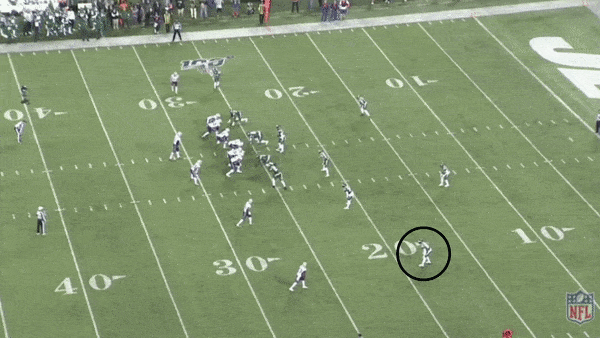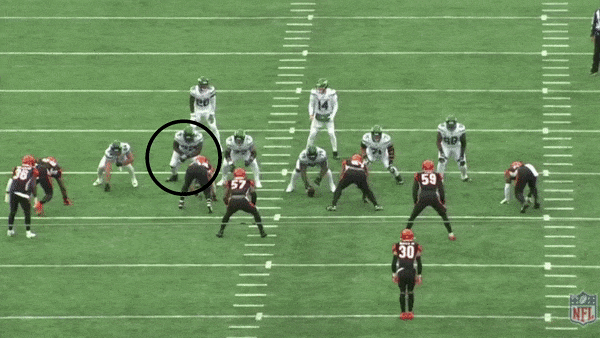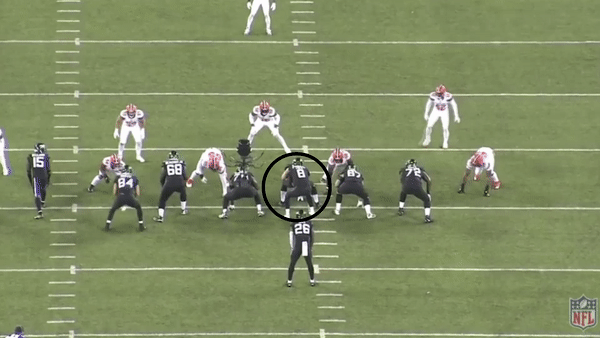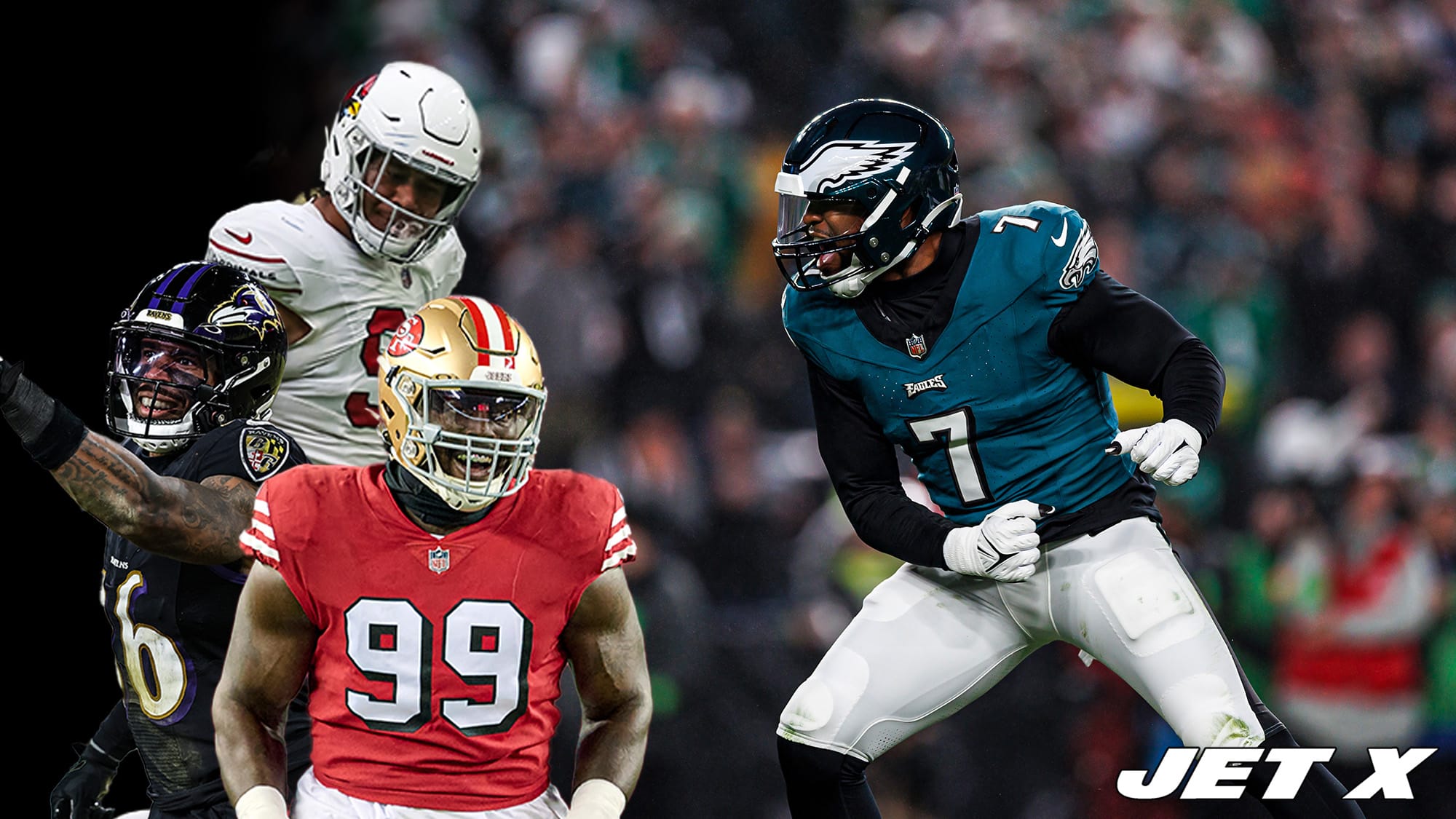Which member of the 2019 New York Jets had the most substantial negative impact on the team?
Singling out the Jets’ 2019 MVP is an easy task – it’s Jamal Adams. His position-redefining talents speak for themselves, while he was named the Curtis Martin Team MVP by his teammates for the second straight season.
The Jets only won seven games, though. They were outscored by 83 points. There was a lot more negative value provided by the roster than positive value. Who were the players most responsible for the team’s disappointing season?
Let’s count down the top-10 least valuable players on the 2019 Jets – all the way up to the penultimate “LVP” at No. 1.
Keep in mind that this list is looking to capture the top-10 players who were the most negatively impactful to the team, so playing time is key. These are not necessarily the 10 worst players on the roster, but the ones who caused the most cumulative damage to the team’s chances of winning games.
Who was the 2019 Jets LVP?
10. Daniel Brown
The Jets certainly did not plan for Brown to play as much as he did (18.5 snaps per game), but Chris Herndon‘s injuries threw him out there, and it hurt the offense.
Brown was particularly abysmal as a blocker, which is the role that he was primarily used in (Brown blocked on 62.8% of his snaps). His Pro Football Focus run blocking grade of 45.9 ranked fourth-worst out of 82 qualified tight ends (4th percentile). He also yielded two sacks on just 30 snaps in protection, ranking 44th out of 49 tight ends in pass blocking efficiency (10th percentile).
Brown was one of the top culprits behind Le’Veon Bell‘s lack of rushing production.
As expected, Brown brought little-to-nothing as a receiver. With 72 receiving yards on 102 routes run, Brown averaged 0.71 yards per route run, ranking 61st out of 70 qualified tight ends (13th percentile).
9. Neville Hewitt
When Avery Williamson went down with a season-ending injury in the preseason, Hewitt was chosen as his replacement to start alongside C.J. Mosley.
Hewitt maintained that role throughout the season. Over his 12 appearances (he missed four games with a neck injury), Hewitt participated in 94.9% of defensive snaps on average.
The drop-off from Williamson to Hewitt was much larger than many seemed to realize during the season.
Some have claimed that the Jets defense’s success without Mosley and Williamson proved they were replaceable (particularly Williamson).
Correlation does not equal causation. The Jets succeeded defensively in spite of Hewitt, not because of him. What the narrative should be is that Gregg Williams and other facets of the defense deserve a load of credit for succeeding in spite of the massive drop-off they had to deal with at linebacker.
Hewitt was a liability in every area besides pass-rushing. In coverage, he was tagged with allowing 37.8 yards per game, which ranked as the 9th-most among linebackers. He was also a missed tackle machine, posting the fourth-worst missed tackle rate (17.7%) out of 60 qualified linebackers. His run defense was ineffective.
Hewitt is a great depth piece for his blitzing proficiency and special teams value, but he has not proven to be starting material.
8. Chuma Edoga
Edoga was a rookie and the fifth-youngest tackle to start a game in 2019 (22 years and 134 days old). It goes without saying that he has the potential to improve greatly going forward.
However, we’re looking only at 2019 impact here, and Edoga was a major detriment in his first NFL season.
Edoga allowed 22 pressures (6 of them being sacks) over 244 snaps in protection, ranking fifth-worst out of 79 qualified tackles in pass blocking efficiency (5th percentile). He also committed six penalties over just 421 snaps.
On the plus side, Edoga was inching closer to respectability before his season-ending knee injury.

In addition to the obvious challenges of being a rookie, Edoga was tossed into an absolute mess of a lineup mid-season and then had to switch positions twice. He showed some flashes of exciting potential, and I’m intrigued to see whether he can take a leap in 2020.
7. Nate Hairston
Hairston bounced in and out of the starting lineup throughout the season. He played extended action at cornerback seven times over 13 appearances, logging 392 defensive snaps.
The former Colt had a rough season. Over 229 snaps in coverage, Hairston allowed 28-of-37 passes in his direction to be completed for 417 yards, three touchdowns, and one interception while committing three penalties.
On the year, Hairston allowed the second-most yards per target (11.3), third-most yards per cover snap (1.82), and sixth-highest passer rating (127.9) out of 114 qualified cornerbacks. He also had the fifth-worst missed tackle rate (23.5%) with eight whiffs against 26 tackles.
Against the Giants in Week 10, Hairston had an abhorrent start in which he allowed 5-of-6 passing for 87 yards and one touchdown while committing two penalties – over just 16 snaps in coverage (5.43 yards per cover snap). He was benched for the effort, thrusting Bless Austin into the spotlight for his first professional action and setting the stage for a promising rookie season.
6. Darryl Roberts
Roberts started at cornerback over the Jets’ first eight games until a calf injury pulled him out prior to the Giants game in Week 10. Over the four games that Roberts missed, Austin and Arthur Maulet seized the starting cornerback jobs, and Roberts never returned to the role. He started two games at safety while Adams was sidelined.
From Weeks 1-9 (his stint as a starting corner), Roberts earned an overall PFF grade of 53.1 that ranked 64th out of 79 qualified cornerbacks (19th percentile). He allowed the ninth-most yards per game (47.5), seventh-most touchdowns (4), and committed the third-most penalties (7) over that span. Teams loved targeting him, as Roberts was thrown at once every 5.1 coverage snaps, the fifth-most frequent rate at his position through Week 9.
Roberts allowed this go-ahead touchdown pass to John Brown in Week 1 (even committing a pass interference in the process).
5. Trumaine Johnson
Johnson was absolutely horrible for the Jets in 2019, but he lands this low simply because he didn’t play enough to continue hurting the defense. He only played 314 defensive snaps, 20th on the team. Johnson missed the final nine games with an ankle injury (not surprising considered he was having them broken on a weekly basis) and played just 11 snaps from Weeks 2-3 as his awfulness landed him in Gregg Williams’ doghouse.
Johnson allowed 250 yards and 13 first downs on 25 targets, putrid rates of 10.0 yards per target and a 52.0% first down percentage. He also committed four penalties for 40 yards. His coverage grade of 50.3 ranked 104th out of 121 qualified cornerbacks (14th percentile).
Some of the things that Johnson did were mind-bogglingly horrendous. In addition to his clear loss of adequate athleticism, it looked the Monstars from Space Jam sapped all of the football knowledge out of him. Why on earth is Johnson opening up towards the sideline here?
Here’s another inexplicable rep. Johnson decides the best way to cover a vertical route coming through his deep third is to remain stationary and jab at the receiver. That… did not work very well. At all.
You could blame Marcus Maye and assume Johnson was trying to pass Nelson Agholor off, but Johnson had no reason to do that. Maye signaled to Johnson to take the route. Brian Poole was in man coverage on the tight end breaking outside. Agholor was Johnson’s only responsibility. He just covered it as poorly as possible (well, I guess it was better than just standing there, but not by much).
Players like Johnson – taking up a huge portion of cap space and playing awfully – are absolutely massive bombs to any roster.
4. Brandon Shell
Shell was benched in favor of Chuma Edoga early in the season but kept reappearing in the starting lineup as Edoga and Kelvin Beachum battled injuries. When Edoga went down for the year, Shell reclaimed the right tackle spot and played every snap over the final five games. He logged 806 offensive snaps on the season, third-most on the team behind Darnold (840) and Robby Anderson (926).
Despite showing glimpses of potential throughout his young career, Shell never brought everything together. In 2019, he allowed 43 pressures (7 of those being sacks) on 468 protection snaps, ranking 60th out of 63 qualified tackles in pass blocking efficiency. The pressure total ranked as the eighth-highest total among tackles despite Shell playing the 46th-most protection snaps.
3. Ryan Kalil
Kalil looked every bit like a 34-year old, 13th-year vet that came out of retirement late in the summer. His 55.5 overall grade from PFF ranked 33rd out of 35 qualified centers. He was called for five penalties on only 343 snaps – no qualified center was penalized more frequently (once every 68.6 snaps).
While Kalil’s individual pressure numbers were average (he ranked 18th of 35 with 7 pressures and 0 sacks over 195 protection snaps), he was in the middle of countless communication errors that led to unblocked pressure seeping through. The Jets offensive line ranked 29th in pass blocking efficiency over Kalil’s tenure (granted, it was still 30th after his exit).
Kalil was abysmal in the run game as well. The Jets averaged 0.7 yards before contact per rush attempt on carries through the A-gaps while Kalil was in the lineup, and his 55.5 run blocking grade ranked 29th at the center position.
2. Jonotthan Harrison
Harrison’s stint as the starting center showcased why Joe Douglas was inclined to upgrade the position just barely over a month prior to the season, even if the new option was a formerly retired player.
Harrison took over for Kalil during the team’s Week 8 game in Jacksonville and held down the center position throughout the rest of the season, playing 679 snaps in total.
With an overall PFF grade of 51.4, Harrison ranked as the league’s worst center out of 35 qualifiers. He graded out at 29th in protection (56.3 grade) and 35th in the run game (47.7 grade).
Harrison ranked 29th in pass blocking efficiency with 20 pressures allowed (10th-most) over 389 snaps in protection (28th-most), while the Jets averaged 0.9 yards before contact per rush attempt on carries through the A-gaps in his starts.
2019 New York Jets LVP: Luke Falk
Falk may have only played in three games, but he was so bad in those that the Jets would have had to play near-perfect football in every other facet to have a remote chance of winning.
Because of the importance of the quarterback position, Falk takes the number one spot despite his lack of playing time. He was the main reason that the Jets went 0-3 and scored 3.3 offensive points per game without Sam Darnold. With average quarterback play, the Jets likely would have had a good chance of beating the Browns and Eagles.
Falk completed 47-of-73 passes for 416 yards (5.7 per attempt), no touchdowns, and three interceptions (62.4 passer rating). He averaged 2.1 adjusted net yards per attempt (accounts for sacks, touchdowns, and interceptions), which was about one-third of the NFL average (6.2) and ranked 52nd out of 53 quarterbacks to throw 50+ passes (Will Grier was the only QB worse). Only one of his completions traveled 20+ yards downfield.
The Jets offensive line did Falk no favors, but Falk did everything possible to accentuate those woes. His pocket presence was awful. He took 16 sacks, a sack rate of 18.0%. That was 4.5% higher than any other quarterback, and nearly triple the NFL average of 6.7%.
Too many times, Falk missed open receivers as he stood in the pocket for way, way, way too long. Some of the examples are comical. On this 3rd & 8 play, Falk stares at an open Robby Anderson standing right on the marker and does not pull the trigger. Even if he doesn’t like that option, Ryan Griffin is sitting down inside. Falk throws to neither of these blatantly available options and takes a sack.
All the Jets needed Falk to do was hit easy throws like that one to have a chance at stealing a game or two without Darnold.
Alas, the Falk tale was not meant to be.

